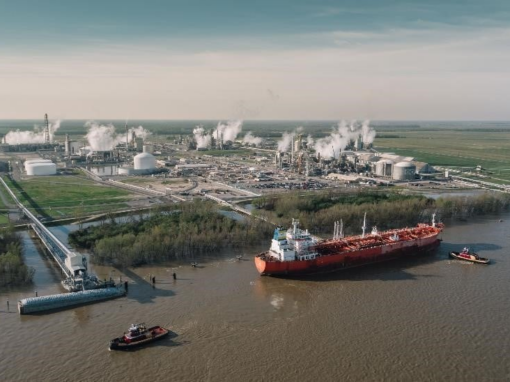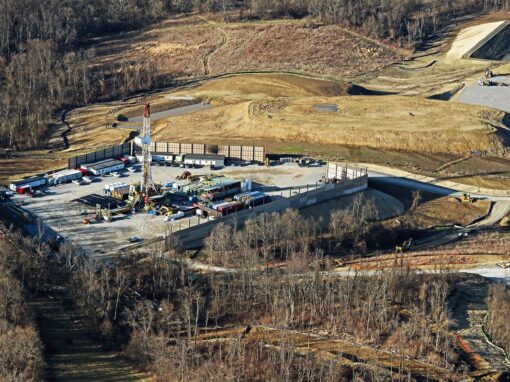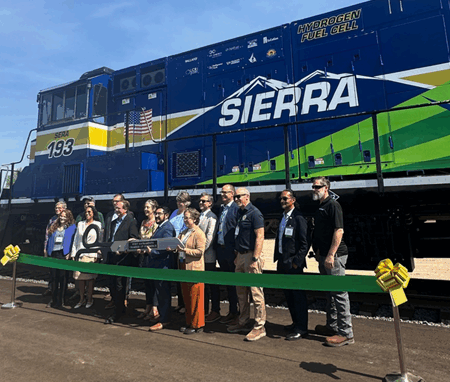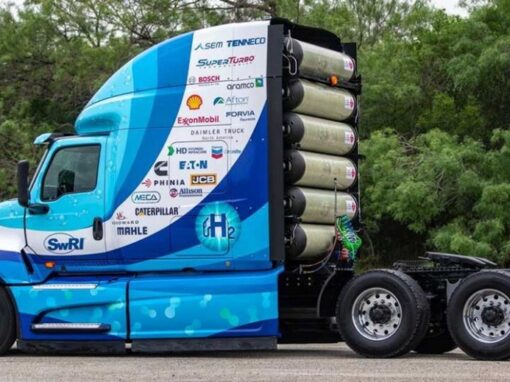by Grace Lane, FCHEA
The rail industry is essential to the movement of American goods and people across the country. Although rail is a relatively clean mode of travel and transport of goods, in order to achieve strong net zero goals, investment is required to abate this hard-to-decarbonize sector that accounts for 2% of total U.S. greenhouse gas emissions.
California now requires that all passenger trains operating in the state have net-zero emissions by 2030 and that all new freight trains be placed in service by 2035. California’s leadership is encouraging other states to also look at hydrogen as a cleaner alternative to diesel-powered locomotives. At the national level, the U.S. Department of Energy recently announced its goals of achieving a net-zero rail sector no later than 2050.
Upon analyzing different zero-emissions rail technologies, the California Department of Transportation (Caltrans) found that hydrogen-powered engines could travel longer ranges before needing refueling and had shorter refueling times than battery-powered electric engines. Hydrogen trains also operate more quietly, allowing for easy application in population-dense areas. The deployment of hydrogen-powered rail systems will allow California to meet its climate goals. Caltrans has begun its investments to meet its goal of a zero-emission rail system by 2045 with the purchase of 10 hydrogen FLIRT (Fast Light Intercity and Regional Train) H2 vehicles. The first train will be shipped to San Bernardino by the end of the year to be used on San Bernardino County’s Arrow commuter rail service. The rest of these trains, also made by the Swiss manufacturer Stadler Rail, will enter operations in 2027 and will run on the Valley Rail service between Sacramento and Merced.
Throughout other parts of the United States, efforts to decarbonize rail are leading investors toward hydrogen technology. With the help of a kit created by Class 1 freight railway Canadian Pacific Kansas City (CPKC), CSX unveiled its first hydrogen-powered locomotive in April in Huntington, West Virginia. Currently, the vehicle is undergoing testing to ensure its safety and applicability in freight operations.
FCHEA member Ballard Power Systems is working with partners to deploy its fuel cell systems in the rail sector. Ballard is supplying CPKC with approximately 6 megawatts (MW) between two separate orders to support hydrogen-powered locomotives. Funded partially by Emissions Reduction Alberta, this initiative underscores CPKC’s commitment to reducing greenhouse gas emissions and Ballard’s role in enabling the electrification of rail applications in North America. The collaborations and technological advancements in the hydrogen industry that are taking place in the U.S. are moving quickly and successfully.

CPKC Hydrogen-powered train (Source: Ballard)
Additionally, FCHEA member Wabtec is working as an integrator within the industry by fostering a diverse group of partners-investors, policymakers, engineers, and more, to ensure the path to decarbonizing the rail industry is as rapid and efficient as possible. Wabtec’s Evolution Series Tier 4 freight locomotive was the first of its kind to meet the Tier 4 emission standards of the Environmental Protection Agency (EPA).

(Source: Wabtec)
The rest of the world is similarly eager to decarbonize the transportation industry, with many countries deploying hydrogen-powered rail to make this zero-emissions shift take place. Currently, Europe is leading in the deployment of hydrogen trains with large projects in Austria and Portugal. In March, Accelera, the zero-emissions business segment of FCHEA member Cummins, successfully commissioned its first fuel cell-powered locomotive to be deployed in Austria’s HY2RAIL project. This project is a collaboration between Accelera, voestalpine, and other partners to demonstrate the feasibility and benefits of hydrogen-powered locomotives. Similarly, the European Union’s FCH2Rail hydrogen train project recently finished its testing phase in Portugal. This project aims to evaluate the feasibility and performance of hydrogen-powered trains in real operational conditions. In addition, projects are taking place in Germany and the UK. In Germany, the Elbe-Weser Railroad Company (EVB) became the first to put a hydrogen-powered train into service. In 2022, The Lower Saxony Regional Transport Company donated €81 million (US$86 million) to the project, allowing for 6 hydrogen-powered trains to run throughout Lower Saxony. In the UK, work is being done through their HydroFLEX project, which aims to decarbonize the British railway network by replacing diesel-only trains and turning toward hydrogen as they follow the UK Government’s commitment to reduce carbon emissions by 80% by 2050.

(Source: Wabtec)
China is also making efforts to support its green agenda with hydrogen. Their new hydrogen-powered train reached 160km/h (99mph) in a trial run, making China optimistic about the future use of hydrogen technology to decarbonize the transportation industry. These global efforts highlight a growing commitment to hydrogen technology in rail transportation.
Renewable Innovations (RI), another FCHEA member, is building solutions to enable the safe and efficient transport of hydrogen, a critical element to the success of using hydrogen for trains. RI’s Hydrogen Transport Refueler includes built-in compression and chilling equipment (powered by the onboard fuel cells), as well as numerous options for delivery connections.
Other FCHEA members have been making sure the trains run on time, deploying fuel cells at switching stations, signals, and other critical sites. Plug Power has been working with rail companies such as CSX and BNSF to ensure reliable, efficient, and sustainable backup and off-grid solutions for this sector for almost a decade, protecting them against grid-interruption events.
There are still currently infrastructure and cost barriers to hydrogen train adoption. With the investments in research and development to improve hydrogen technology that is already taking place, as well as policy and regulatory support to drive innovation and adoption, this sector has a promising future.
Global collaborations and technological advancements are setting the stage for a sustainable, zero-emissions future in rail transportation, promising a cleaner and greener future for generations to come



